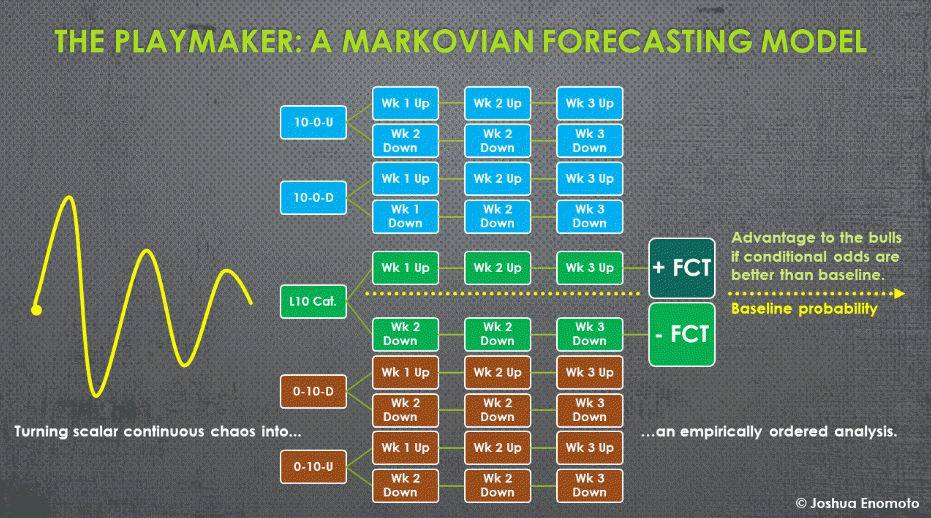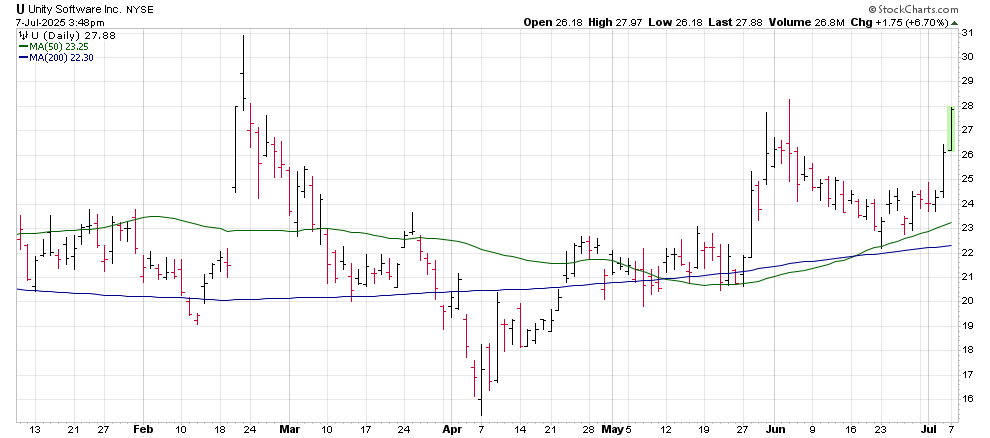Per conventional wisdom, Unity Software (NYSE:U) would likely not be considered an intriguing buying opportunity. It’s not just about the fact that, as of this writing, U stock gained over 16% on a year-to-date basis, greatly exceeding the tech benchmark Nasdaq Composite’s performance of just under 7% during the same frame. In the past five sessions, Unity has skyrocketed more than 12%, suggesting a lot of the good news has already been baked in.
Invariably, retail investors gravitate toward discounts or securities marketed as such. Admittedly, in the relative near term, it’s difficult to frame U stock as cheap. In the past 52 weeks, for example, the security gained over 66%. From a technical standpoint, it appears that Unity is riding an ascending trend channel, which again points to the very real possibility of the good news being already accounted for.
Still, it may be helpful to consider U stock in an entirely new framework. Against a quantitative backdrop, the video game software development specialist could be a tempting bullish proposition.
Under a traditional framework, analysts attempt to find patterns in continuous scalar signals, whether that be the share price (technical analysis) or financial metrics (fundamental analysis). Unfortunately, the difference between companies using these guideposts are often vast. Some companies issue literal penny stocks; others command per-unit price tags of three or more digits. In the data analytics world, that’s just noise.
 However, amid the chaos of price discovery in the equities arena, there is a common unifying message: at the end of every trading session (whether that’s a day, a week, a month or whatever), market participants as a collective whole make a decision whether to be net buyers or net sellers. In other words, the chaos of the markets can be distilled into market breadth — sequences of accumulative and distributive sessions.
However, amid the chaos of price discovery in the equities arena, there is a common unifying message: at the end of every trading session (whether that’s a day, a week, a month or whatever), market participants as a collective whole make a decision whether to be net buyers or net sellers. In other words, the chaos of the markets can be distilled into market breadth — sequences of accumulative and distributive sessions.
Perhaps the best way to describe the above process is turning noise into music.
Using Statistical Analysis to Generate a Gameplan for U Stock
Converting continuous scalar signals into discrete events is called discretization and it’s a core principle of Markovian analyses. Primarily, the reason why is that discretization forms a decision-tree logic. Part of the problem of technical analysis is that perceived patterns or indicators are dependent on the scale of the security at that time. When the scale changes (as it usually does), the pattern or signal may change too.
In contrast, under a Markovian framework, price action is discretized and segregated into distinct, discrete behavioral states. By studying past analogs and the frequency by which certain states transition into other states, we can extract conditional probabilistic data. Should the probabilities of the current hand that the market has dealt us be superior to the baseline probability (i.e. the Gaussian assumption), there is an incentive to deploy a debit-based strategy.
For example, the last two months of price action for U stock can be characterized as a “4-6-U” sequence: four up weeks, six down weeks, with a positive trajectory across the 10-week period. Of course, this conversion process compresses U stock’s magnitude dynamism into a simple binary code. But the benefit is that this price trend can now be empirically integrated into a structured logic tree.
Through past analogs, we know that the 4-6-U sequence is rare, having only materialized 13 times since January 2019. Notably, in 61.54% of cases, the price action for the following week (which corresponds to the business week beginning July 7) results in upside, with a median return of 7.79%. Should the bulls maintain control of the market for a second week, the median tacked-on performance stands at 1.63%.
On Thursday, U stock finished the week at $26.13. If the implications of the 4-6-U sequence pan out as statistically expected, Unity stock could reach $28.62 within two or three weeks. With this knowledge, we can formulate a potentially lucrative strategy.
 A Bold Move for the Speculator
A Bold Move for the Speculator
Based on the market intelligence above, aggressive traders may want to set their sights on the 25.50/27.50 bull call spread expiring July 25. This transaction involves buying the $25.50 call and simultaneously selling the $27.50 call, for a net debit paid of $90, the most that can be lost in the trade. Should U stock rise through the short strike price ($27.50) at expiration, the maximum reward is $110, a payout of over 122%.
What makes this trade attractive is the favorable delta between the Markovian and Gaussian odds. As a baseline, the chance that a long position in U stock will be profitable on any given week is only 47.01%. However, as mentioned above, the 4-6-U statistically offers an upside success rate of 61.54%. Effectively, the 25.50/27.50 call spread could be favorably mispriced.
The thing is, market makers likely don’t believe that is the case because they would rather chase noise and run advanced stochastics on what amounts to Gaussian noise. With a discretization process, the use of a Markovian analysis reveals an asymmetric edge between expected outcomes and conditionally probabilistic forecasts that could potentially be exploited.
— Chris Johnson
Former Wall Street Insider Calls This His Biggest Gold Play Yet [sponsor]Karim Rahemtulla, the trader behind a 400% gain in 24-months on Rolls-Royce, has uncovered another potential multi-bagger. This under-$20 stock gives you exposure to over 1-oz of gold with the lowest production costs in the industry. And an upcoming announcement could send this stock soaring. Get Karim's urgent briefing - click here now.
Source: Money Morning

